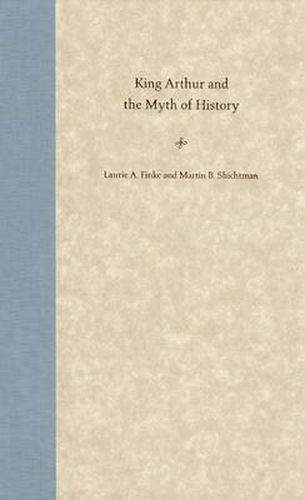Readings Newsletter
Become a Readings Member to make your shopping experience even easier.
Sign in or sign up for free!
You’re not far away from qualifying for FREE standard shipping within Australia
You’ve qualified for FREE standard shipping within Australia
The cart is loading…






‘King Arthur and the Myth of History’ considers why, in the 12th century, tales of a 6th-century British king who achieved immortality in an apparently hopeless struggle to repel Saxon invaders, suddenly emerged full blown, virtually from nowhere, Further, why did this figure from the margins of the Norman empire suddenly become an important subject of historical writing at the center of that empire, and why has he since continued to be an enduring cultural icon? Laurie Finke and Martin Shichtman contend that Arthur has been employed by historians as a potent but empty symbol, deployed to legitimize institutional political ambitions during times of social stress. The study focuses on three periods of cultural crisis: the Norman colonization of England in the 11th and 12th centuries, the war of the Roses in the 15th century, and the rise and resurgence of fascism in 20th-century Europe. It examines four English chronicles of the Norman period - those of William of Malmesbury, Geoffrey of Monmouth, Wace, and Layamon. Other chapters investigate John Hardyng’s ‘Chronicle’, and Malory’s ‘Morte D'arthur’, both produced during the tumult of the Wars of the Roses. Finally, it considers mor
$9.00 standard shipping within Australia
FREE standard shipping within Australia for orders over $100.00
Express & International shipping calculated at checkout
‘King Arthur and the Myth of History’ considers why, in the 12th century, tales of a 6th-century British king who achieved immortality in an apparently hopeless struggle to repel Saxon invaders, suddenly emerged full blown, virtually from nowhere, Further, why did this figure from the margins of the Norman empire suddenly become an important subject of historical writing at the center of that empire, and why has he since continued to be an enduring cultural icon? Laurie Finke and Martin Shichtman contend that Arthur has been employed by historians as a potent but empty symbol, deployed to legitimize institutional political ambitions during times of social stress. The study focuses on three periods of cultural crisis: the Norman colonization of England in the 11th and 12th centuries, the war of the Roses in the 15th century, and the rise and resurgence of fascism in 20th-century Europe. It examines four English chronicles of the Norman period - those of William of Malmesbury, Geoffrey of Monmouth, Wace, and Layamon. Other chapters investigate John Hardyng’s ‘Chronicle’, and Malory’s ‘Morte D'arthur’, both produced during the tumult of the Wars of the Roses. Finally, it considers mor